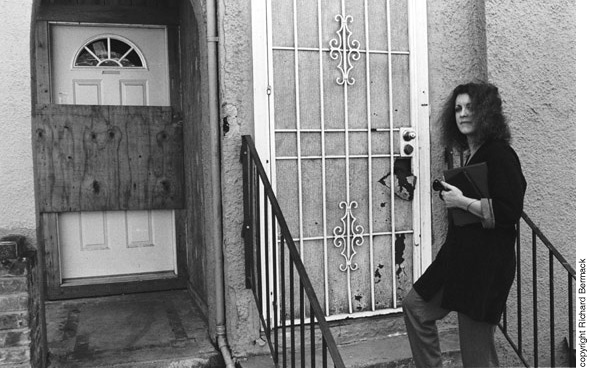Photography Exhibits
Photo from "Fighting to Care: California's Social Workers SEIU 535"Exhibit at U.C. Berkeley Institute of Industrial Relations 1/15-7/15 2002, photo 8 of 12

Children's Protective Services Emergency Response Worker Denise Smernese (1999)
When children's protective services workers go out on a call they never know what to expect. The following excerpt is from "The Other Side of the Door," an article about the dangers workers face. SEIU campaigned for safety retirement for social workers and the union was successful in getting a major enhancement in the retirement packages for all county workers. Children's protective services workers routinely go into dangerous environments where even police officers fear to tread. Verbal abuse, death threats, and the display of guns are not uncommon. But unlike police officers, who carry guns and wear bulletproof vests, social workers' only protections are compassion, understanding, and the knowledge that they are there to help.
When she saw someone in the next room loading an automatic weapon, Alameda County children's protective services worker Denise Smernes's immediate thought was, "If I don't do something fast we are going to get shot." A verbal confrontation had broken out between the police officer accompanying her and the woman who had answered the door. Emotions were escalating fast. Smernes turned to the officer and told him to leave the apartment immediately and wait for her in the car. "I'm not leaving you with these people," he responded. "Leave before someone gets hurt," she replied. Then she quickly began reassuring the occupants that she was not a threat to them. "I'm not here to take the kids, I just need to make sure they are safe. I know the father has left them with you."
Later, while driving back to the office, the officer apologized for being overly aggressive and on edge. A few days earlier another officer, his close friend, had been killed in the same housing project, he explained.
"Most of our clients are good people who are
confused about their lives," Smernes feels it is important
to point out. "They have problems with substance abuse, mental
health issues, and general societal problems." The dangerous
people are not the majority, it is just that they are hard to predict
and erratic situations can catch workers off guard.